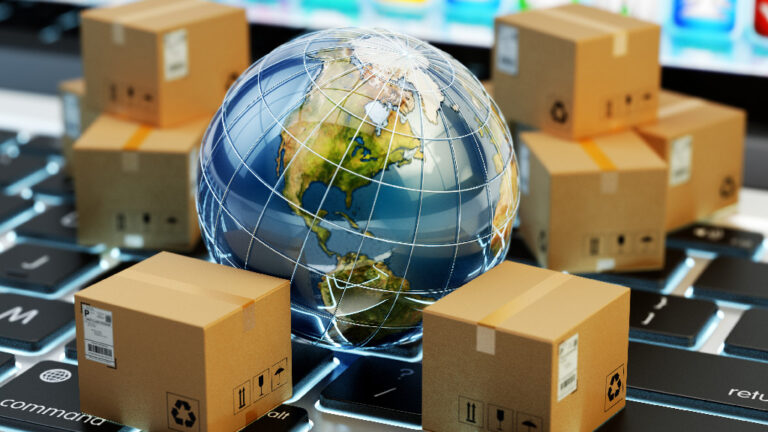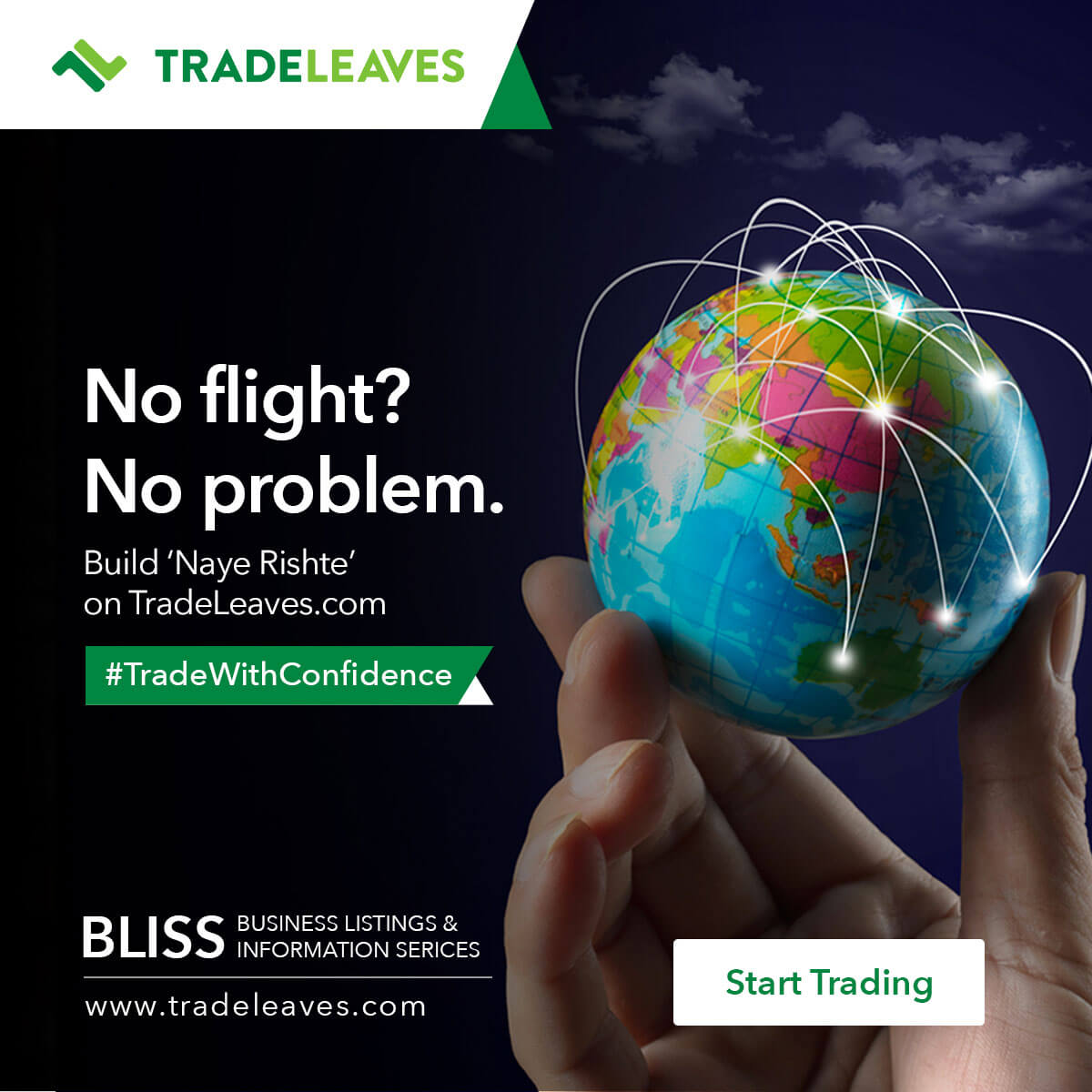Whether you are a buyer or seller, there are many things you need to consider when you are entering the international trade market. You will come across many new terms you have never heard before, like landing costs and Incoterms. You will see many acronyms, and you will need to at least know what each pertains to. When you know and understand your industry and its terms then you can better focus on doing business with your international trade partners, and the customers whom you got into the business for in the first place.
At TradeLeaves, it is our job to help you understand what each of these mean and to provide you with the knowledge that could help you remain compliant with international trade laws.
Buying and Selling Internationally
Your first concern is that you want to be sure that you can legally buy and sell products through international trade. This involves having the proper licensing. Do you want to import? Then you may need to have an import license. If you plan to export goods to another country, then you may need to have an export license. This would authorize you to export your product to the destinations outlined therein. Check with the customs authorities in your country and the country you want to conduct trade with to see what laws govern the international trade of the products.
In many cases, you will not need a license. This would fall under a provision called Open General License. This means that goods can be freely traded, except to the extent that the country regulates.
While you may not need a license to trade, some countries do carry other requirements. For instance, in India, you will need an Import Export Code (IEC), issued by DGFT – Director General of Foreign Trade, Ministry of Commerce, Government of India, in lieu of a license. Once the code is issued, it is valid for a lifetime.
Classification
Products that are traded internationally are classified universally using Harmonized System (HS) Classifications. HS Classification is a 6 digit code assigned to every product. Each importing country then extends this code to 8 digits or 10 digits to uniquely identify the product variations. Each importing country defines the tariffs using this classification system. It also goes by the name Harmonized Tariff System, or HTS.
Having this means of separation not only helps customs with taxation, it helps all international trade business owners conduct business on common ground. For instance, let’s say an importer’s business is handbags. Handbags have a specific 6 digit HS Classification. Therefore, all importers of handbags use the same HS classification. Each importing country then extends this HS Code to 8 digits or 10 digits and uses this code for specifying the tariffs.
There are also classification codes for exports as well. They are a modification on the HTS. This system adds four digits, making a total of ten digits and is called Schedule B.
Regulations and Compliance
The next thing to consider is the laws of the country you live in and the country you plan to do business with. These will often have dramatic differences, so due diligence is crucial to prevent problems with your shipment or unwanted penalties.
Each country has its own set of rules and regulations that govern the movement of goods within and out of their country. This can include the terms and conditions at which trade between two or more countries is conducted. These rules can vary from country to country; they can even vary from state to state, and can include:
- Whom they can trade with – Trade laws can include or exclude countries or entities.
- How items are classified – Harmonized System (HS) Classifications – these are generally 6 to 8 digit, sometimes even 10 digit, classification codes that divide goods into sections to help customs identify duty and tax rates for specific types of products
- What items can be shipped – Laws that state the guidelines, rules and regulations for exporting or importing a product. These could vary by not only country but also state. For example, State of California has specific guidelines for lead percentage that differ from other states in the United States.
- How much duty or tax payments are paid – What one item costs in one part of the country could be different in another part. These costs vary for a number of reasons from demand to shipping costs.
Adherence to these rules and regulations is called compliance. Failure to comply can result in strict penalties to the companies involved or revocation of importing/exporting privileges.
It is also important to know certain facts like the quantity of goods that may be imported without restrictions or additional duties or taxes. These are often called quotas and function as quantitative restrictions. If an importer attempts to ship above the quota they could face steep penalties, rejection or forfeiture of their shipment, or even loss of importing privileges.
Another beneficial fact to know is the list of restricted or banned products that are prohibited from import or export due to their health, environmental, or security concerns.
There is not only a list of banned products but also a list of denied parties. This is a list created by governmental agencies to warn companies to refrain from interacting with entities on the list for their protection.
Tariffs and Duties
When you begin to consider the regulations of other countries, you realize that there will be added expenses that will be above and beyond the costs you were expecting, whether you are a buyer or a seller. These come in the form of tariffs, duties and fees.
International rules and regulations often regulate tariffs and duties. Tariffs are the fees that are assessed on a product based on HTS classification a published list called a schedule. Duties are the actual amounts paid to the customs authority of the importing country. Duties are assessed by the customs authority of the importing country and are based on the HS Code we spoke of earlier. Each classification is assessed a fixed percentage and is generally based on the value, weight, or quantity of goods imported or exported.
In addition to duties, importing countries in certain instances assess countervailing duties and anti-dumping duties as a form of checks and balances. Countervailing duties (CVD) are imposed on an importer who is importing goods into a country at a cheaper rate that could affect domestic product already sold. These cheaper rates are often due to a subsidy in the exporting country. Dumping is when a company exports a product into another country at a lower price than is currently offered domestically. In such cases anti-dumping (AD) duties are imposed to protect the domestic market.
Customs
Customs is the regulatory agency tasked with protecting the receiving country from the potential risks that arise from international trade. They assist the legitimate movement of international goods entering the country. They are also responsible for managing compliance, regulations, and tariffs within the country they are set up in.
Falling out of compliance, failing to declare product, or violation of a countries rules or regulations could result in severe penalties, fines, forfeiture, or liquidation.
US customs often assess a couple of fees on incoming shipments. These fees are a harbor maintenance fee and used for just as its name implies. The other is a merchandise processing fee. It is a fee assessed on the value of the shipment received.
Shipping Costs and Incoterms
Many of the costs of doing business you are already familiar with: Original cost of goods, you know how much you invested in creating your product. Shipment costs, this is the cost the shipper, or shippers, charges you to take your product from your door to your seller. And when you ship, you need adequate insurance. Insurance fees would cover the cost if something were to happen to your product en route to its destination. All of these fees, when added to custom duties and tariffs, are called landed costs.
We mentioned Shipping costs a moment ago. This can get confusing as it must be determined at what point the responsibility the ownership of the shipment transfers between parties. The terms that define the obligations, risks, and costs of the buyer and seller when it involves the delivery of goods within an export transaction are called Incoterms. Another thing Incoterms determines is who is responsible for the transportation, import, and export process financially.
Incoterms break down as follows:
- EXW (Ex Works), FCA (Free Carrier), FAS (Free Alongside Ship), and FOB (Free on Board) – With these Incoterms, the buyer pays shipping costs. Ideal for the exporter.
- CFR (Cost and Freight), CIF (Cost, Insurance and Freight), CPT (Carriage Paid To), and CIP (Carriage and Insurance Paid To) – With these Incoterms, the seller pays the main shipping costs and includes in their price. The goods travel at the buyer’s risk. The buyer should consider insurance.
- DAT (Delivered at Terminal), DAP (Delivered at Place), and DDP (Delivered Duty Paid) – With these Incoterms, the seller pays shipping cost and assumes all travel risks. Seller may want to consider insurance.
Speaking of shipping costs, two terms concerning shipping that are important to know are Tare Weight and Gross Weight. Tare Weight is the weight of the container and shipping material without the product. Gross Weight is the total weight of the container that includes the product you are shipping.
Other costs that aren’t ordinary, but often help with expediency within the international trade industry are employing a customs broker and a freight forwarder. Both assist in speeding up and saving time and money in the overall process. A customs broker assists with clearing shipments, preparing documents, and collect duties and taxes. A freight forwarder advises on the best way to ship goods, prepares shipping paperwork, and tracks shipment.
Invoicing, Certificates, and Documentation
The bulk of the paperwork is often called the collection papers. This includes all documentation that is submitted for the means of payment. This collection can include:
- Bill of Lading – The document that establishes the terms between a shipper and a transportation company. It is usually prepared by the shipper on forms issued by the carrier. It serves as a document of title, a contract of carriage, and a receipt for goods.
- Commercial Invoice – An itemized list of goods shipped, usually included among an exporter’s collection papers
- Insurance Certificate – A document issued by the shipper under an open marine insurance policy to cover a particular shipment of merchandise.
When you ship internationally, you will most likely be dealing with a different type of bill of lading (BOL). These are called Ocean Bills of Lading. It differs from the inland bill of lading in that it serves as a collection document, meaning both the bill of lading and invoice. If the BOL is labeled “straight,” then the foreign buyer can obtain the shipment with proof of identity. If it is a “negotiable” BOL, then the buyer must first pay for goods, post bond, and meet other conditions laid out by the seller.
On an invoice itself, there are several important fields on each invoice that inform he buyer and seller of quantity, costs, destination, as well as pertinent terms and conditions. Many of the terms on an invoice you may see, but are not limited to, are as follows:
- ETD – Estimated Time of Delivery – the date and time that a shipment is expected to be delivered to the final destination.
- POL – Port of Loading – the location where the shipment is loaded onto the vessel.
- POD – Port of Discharge – the location where the shipment is offloaded from the vessel.
- CBM – Cubit Meter is the standard measurement used in shipping. It is used by multiplying the width by the height by the length of a container.
- DDC – Destination Deliver Charge – is a charge for the handling of the product at the destination port.
A couple of other acronyms you will come across that you won’t see on an invoice but are essential because they will help you when dealing with smaller quantities.
- MOQ – Minimum Order Quantity requirement specifies the lowest quantity that a supplier is willing to sell.
- LCL – Less than Container Load – If you have just one or only a few pallets to ship, you cannot get competitive shipping rates on your own. It means you are going to pay more for freight or get a better price through consolidating similar LCL shipments. However, this may result in delays as the shipper locates other like cargo to ship with.
You will also come across many certificates through the shipment process. Certificates of origin are required for tariff purposes. They certify that the goods are coming from a specific country. A certificate of inspection is a document that states the product was in good condition immediately prior to its shipment. And certification of manufacture is a notarized statement where a producer certifies that manufacturing is complete and the goods are now in the hands of the buyer.
In addition to the paperwork that must be sent between the parties doing business, an invoice needs to be sent to the country’s embassy called a Consular Invoice. It is a document certifying a shipment of goods. It shows information such as the ‘consignor,’ ‘consignee,’ and ‘value of the shipment.’ This would also fall under remaining compliant with the rules and regulations of international trade.
As a buyer, after you have taken ownership of the goods and they are moved into an approved storage facility until you are ready to sell the product, the location you store them gives you a document called a warehouse receipt. This is proof of ownership of the goods.
It is also important to note that all paperwork, whether you are an importer or exporter, must be kept on file for five years. If you are audited and do not have every invoice, bill of lading, and certificate of inspection, you could face fines and penalties, and it could quickly close the doors to your business.
Payments and International Trade
After you have dealt with the invoice, you want to get paid. There are forms of payment within the international trade industry. In most cases this will have been decided during the writing of the contract so at this point, none of this will come as a surprise.
Within the international trade industry these are the most used methods of payment:
Documentary Collections – D/C – a transaction that puts the banks in charge of submitting documents needed for a sale to take place.
- D/A – Documents against Acceptance – a payment term that means the buyer accepts delivery of imported goods and documents and makes payment arrangements on a mutually agreed date. (Also known as a Time Draft)
- D/P – Documents against Acceptance – a payment term that means the exporter holds onto the goods, shipping documents, and bill of lading until full payment is made. (Also known as a Sight Draft)
Letters of Credit – L/C – a payment term that allows importers to secure terms of payment to exporter where banks get involved. These payments come in the form of documents requested from the importer that secure the payment to the exporting company from the bank. Then the importing company makes payments to the bank based on terms outlined in the agreement specified. There are several types of letters of credit to be aware of. Here are a few:
- Standby – it provides credit if something goes wrong.
- Confirmed/Unconfirmed – it provides credit if the exporter does not fully trust the bank of the buyer and secures the purchase through a bank of their own and collect from the original bank at a later date.
- Back to Back – it provides two parties to be paid at once. It is used when two different parties are involved in one exporting sale.
- Revolving – it provides repeated business to be conducted between parties without the need to obtain new letters with every transaction.
- Deferred – it provides a period of time between buyer receiving goods and time they have to pay. It is also called usance letters of credit.
Open Account – where goods are shipped and delivered before payment is due. Usually on a 30, 60, or 90-day term. Advantageous for a seller, but risky for an exporter. If used, the exporter would normally carry export credit insurance.
Consignment – is a variation of open account where payment for goods is only made when the goods are sold by the seller.
Cash-In-Advance – to avoid credit risk, the most popular form of a payment arrangement is cash in advance. The top three are credit cards, wire transfers, and escrow payments.
- Credit card payments are no different than what you would see for domestic use;
- Wire transfers are where funds are electronically transferred from a buyer’s account to the seller’s account.
- Escrow works a little differently. A buyer submits payment for the invoiced goods. The funds are then held in the escrowed account. The exporter then ships the goods. Once the buyer receives the goods and approves of them, he gives the okay to the holder of the escrow account and the funds are released.
Disputes and Insurance
Every business will experience disputes, and claims will need to be filed. A good insurance policy and the means to have a resolution to disputes should be kept on hand.
When you enter an agreement for the sale or purchase of goods, especially international trade, make sure there is a clause that outlines what would happen, should there be a disagreement. Dispute resolution outlines how the conflict should be handled. Whether it be through arbitration or court proceeding, what law will govern, and where said preceding would take place.
We mentioned that an insurance certificate should accompany every shipment you send out. This is to protect your goods against loss from damage en route to its destination. One clause that you will often see in international trade is a Sue and Labor clause. This stipulation allows the insured to recover from expenses incurred to minimize loss to the insured property, which insurer would have been liable under the policy.
Another insurance clause is a Particular Average. This gives a partial recovery of losses due to accidental damage to the product. A particular average loss with regards to cargo may either be depreciation in the value of the shipment or a total loss of a part of it.
While most contracts already have a form of dispute resolution built into them, it is wise to read it carefully to ensure that it is there and that it is fair and impartial. Failure to have some form of dispute resolution could leave you in a position where a contract is unfulfilled, and you are left unpaid as an exporter, or with damaged or no product as an importer.
The Final Word
We have covered licensing, invoicing, Incoterms, billing, customs, fees, and getting paid. The world of international trade is an exciting place. And it is filled with opportunity. While this blog has been exhaustive, there is still more to learn. We have given you the basics to get you started on your way to having an exciting start with your trade business.
TradeLeaves is the perfect platform for you to begin your career. From the bustling Marketplace to our informative Business Listing page, that will give you even more information just like this. To get more information on what we can do for you, fill in the info with your name and email and one of our agents will get back with you.






